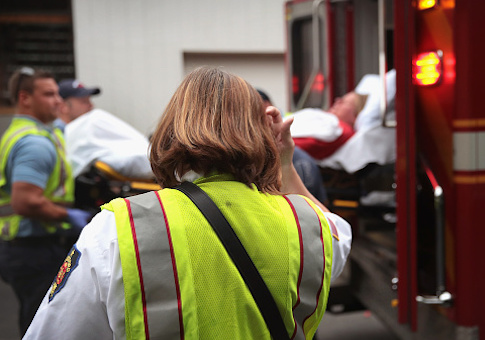The number of teens attempting suicide through self-poisoning doubled between 2000 and 2018, a new study in the Journal of Pediatrics concludes.
The study, authored by a group of researchers based in Ohio and Kentucky, provides further evidence of an alarming increase in suicidality and attempted suicide among America's youth.
Teen suicide is a growing challenge in the United States, with suicide now the second most common cause of death among 10-to-24-year-olds. Although teen suicide rates are lower than those of other age groups, their steady increase since 2007 has caused consternation among public health experts. This is especially so because of spiking rates of depression among the same age cohort.
CDC data indicate that most completed suicides, teen or otherwise, are attributable to either guns or asphyxiation. However, according to the new paper, for every completed suicide there are likely between 50 and 100 suicide attempts, acts which can result in long-term damage to a young person's health and mental well-being. Many of these suicide attempts are through ingestion of poisonous substances.
There are few good estimates, however, of how many suicide attempts there are every year: 8.6 percent of high-school respondents to the Youth Risk Behavior Survey indicate having attempted suicide in the past year, but this figure is based on self-reported data and so likely undercounts the true figure.
To get a different estimate, the study's authors used data from the National Poison Data System to investigate rates of suspected intentional self-poisoning between 2000 and 2018. In total, they identified more than 1.6 million cases over the period.
The lion's share of these cases—71 percent—were among girls. This represents the well-established fact that women are more likely to attempt suicide while men are more likely to complete it, what is known as the gender paradox in suicide. The most common group to attempt self-poisoning were girls ages 16 to 18, with girls 13 to 15 a close second. By comparison, roughly a quarter as many boys as girls attempted to self-poison within the same age group.
Most concerning, however, is the finding's based on timing. Specifically, the authors write, "In children 10-12 years old and 13-15 years old, there was a decline in the number and rate per 100,000 population of annual intentional suspected suicide cases from 2000 through 2010 followed by a dramatic and persistent increase from 2011 to 2018." A similar trend is apparent in those 16 to 18 years old.
The trend is far less pronounced for those over 18, who saw only a small increase in an already relatively high rate of self-poisoning, meaning the group that has seen the greatest percentage increases remain high- and middle-school students.
The big question is, of course, why. Although deeper social factors are likely at play, the study's authors point to one concerning trend: the availability of knowledge about suicide methods online.
"Access to knowledge about specific methods to engage in lethal self-harm and exposure to the suicidal behavior of peers has undoubtedly increased with the ability to search online for readily available information, publicly posted information, and the increase of what is shared on social media networks," the authors write. "Youth are now increasingly exposed online to others struggling with suicidal ideation and engaging in self-injurious behaviors. Research on suicide contagion suggests that such exposure can increase suicidal behavior within peer networks and that youth are particularly vulnerable to suicide contagion."
